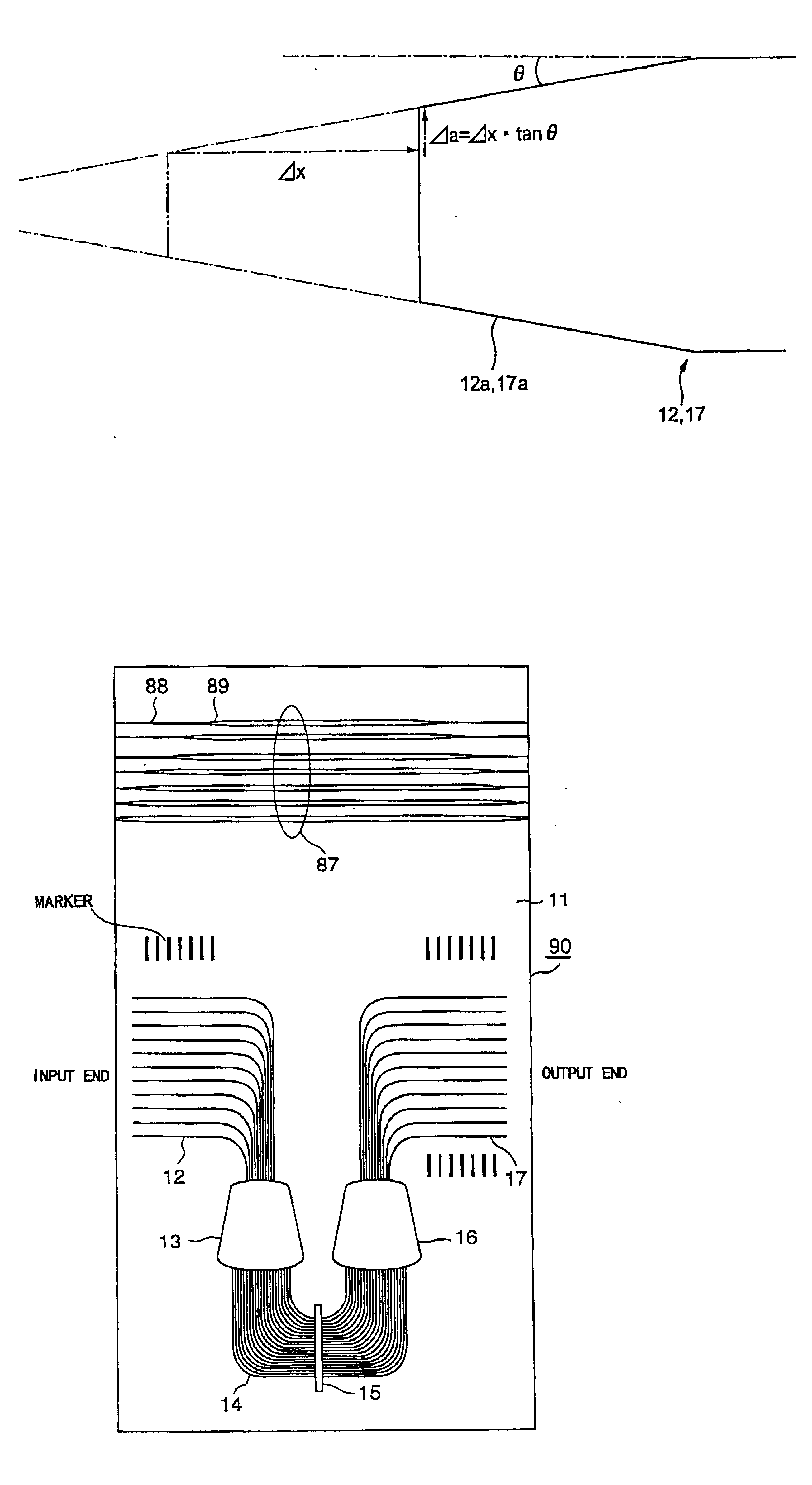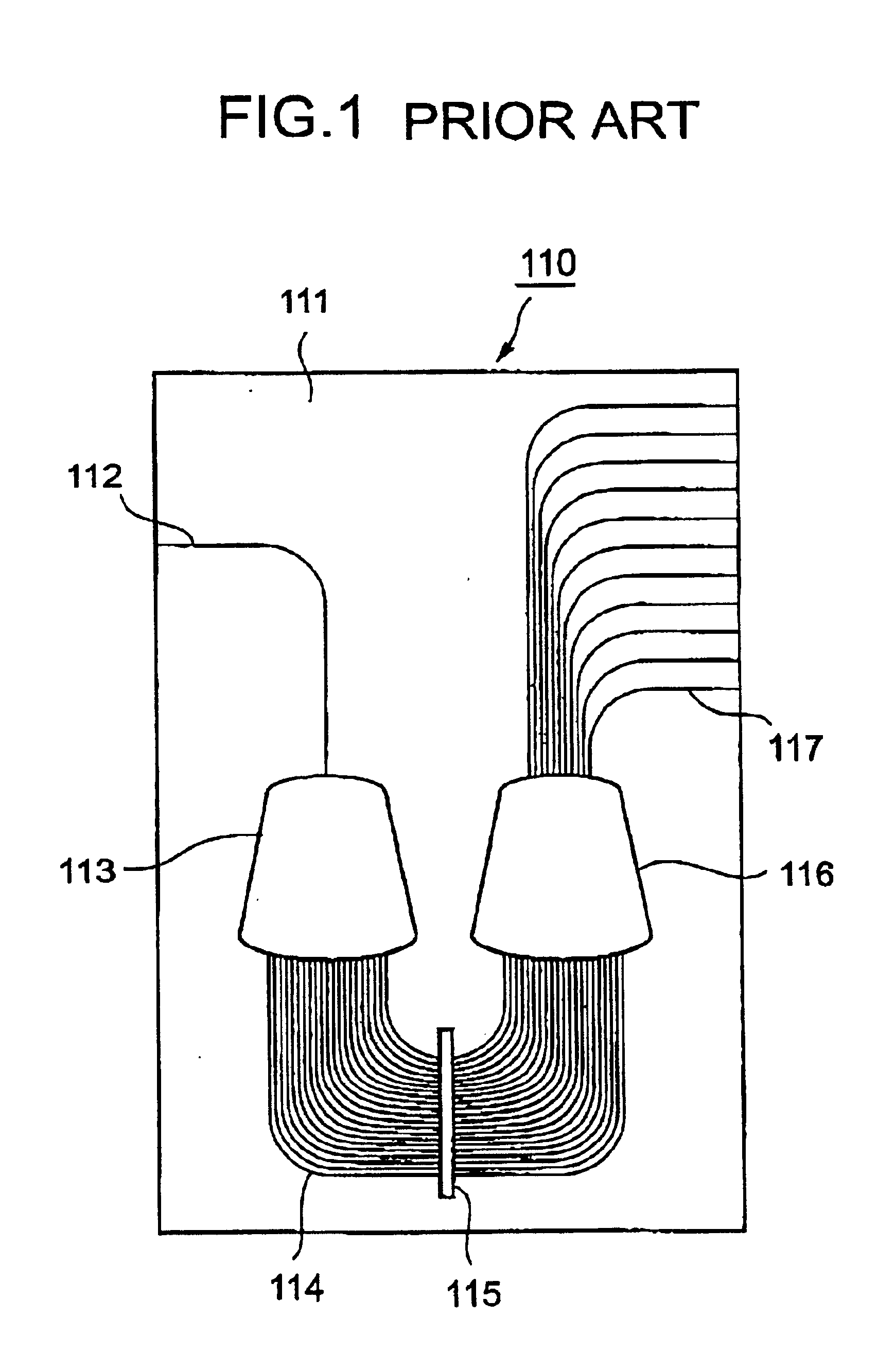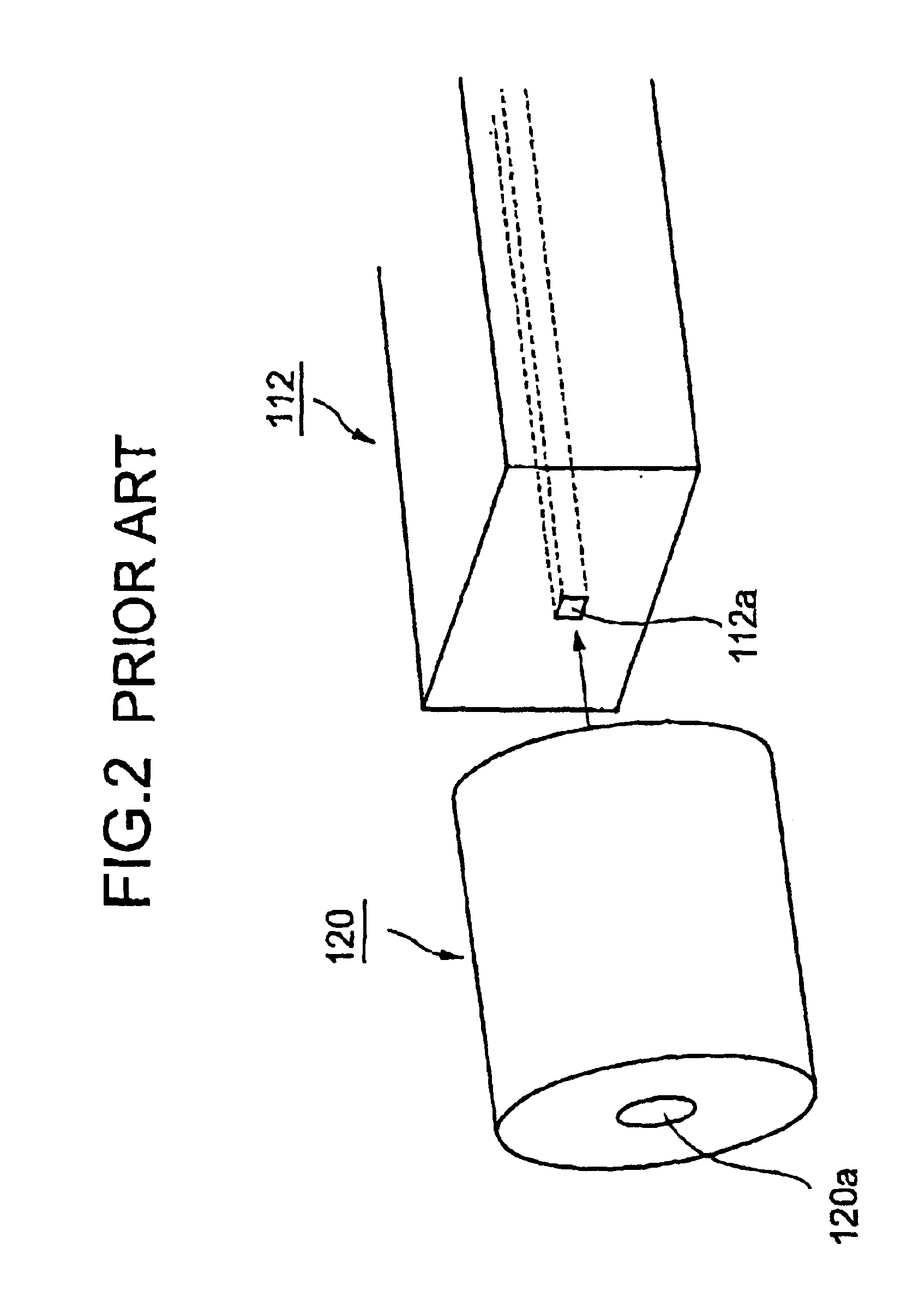Planar lightwave circuit and optical circuit
a lightwave circuit and optical circuit technology, applied in the field of planar lightwave circuits, can solve the problems of superhigh-speed coupling loss, large waveguide, accumulation of coupling loss, etc., and achieve the effect of suppressing coupling loss
- Summary
- Abstract
- Description
- Claims
- Application Information
AI Technical Summary
Benefits of technology
Problems solved by technology
Method used
Image
Examples
first embodiment
[First Embodiment]
FIRST EXAMPLE
[0104]The first example of the first embodiment of the planar lightwave circuit of the present invention will be described with reference to FIGS. 4-8. FIG. 4 is a schematic block diagram of the planar lightwave circuit, FIG. 5 is a magnified view of the core of the input waveguide and the output waveguide of the planar lightwave circuit of FIG. 4. FIGS. 6A-6E are diagrams for explaining a process for fabricating the input waveguide and the output waveguide of the planar lightwave circuit of FIG. 4. FIG. 7 shows a relationship between the core width and the coupling loss of the end face of the substrate which is obtained by calculation. FIG. 8 is a diagram for explaining dicing error.
[0105]As shown in FIG. 4, an input waveguide 12 made of silica-based glass is formed on a substrate 11 made of silicon in which the input waveguide 12 includes a core having high refractive index and a cladding having low refractive index, and the core is covered by the cl...
second embodiment
[Second embodiment]
FIRST EXAMPLE
[0134]A first example of the second embodiment will be described with reference to FIGS. 12 and 13. FIG. 12 shows a schematic block diagram of the planar lightwave circuit, FIG. 13 shows a magnified view of the core of the input waveguides or the output waveguides. Parts which are the same as those of the first embodiment are not described, and the same symbols as those used in the first embodiment are used.
[0135]In this embodiment, the present invention is applied to an arrayed waveguide grating (AWG), which is one of planar lightwave circuits, which performs multiplexing of optical signals of a plurality of different wavelengths and demultiplexing in an wavelength division multiplexing communication system. AWG is an example of a waveguide type optical circuit.
[0136]As shown in FIG. 12, a plurality of input waveguides 12 are provided on the substrate 11. The core width of input end face of the taper part 12aa of the core 12a is different by each inp...
second example
[0143]It is also possible to apply the core 32a, 37a of the second example of the first embodiment to this embodiment, in which a plurality of steps 32aa, 37aa are formed such that the core width decreases gradually toward the end side of input or output.
PUM
 Login to View More
Login to View More Abstract
Description
Claims
Application Information
 Login to View More
Login to View More - R&D
- Intellectual Property
- Life Sciences
- Materials
- Tech Scout
- Unparalleled Data Quality
- Higher Quality Content
- 60% Fewer Hallucinations
Browse by: Latest US Patents, China's latest patents, Technical Efficacy Thesaurus, Application Domain, Technology Topic, Popular Technical Reports.
© 2025 PatSnap. All rights reserved.Legal|Privacy policy|Modern Slavery Act Transparency Statement|Sitemap|About US| Contact US: help@patsnap.com



